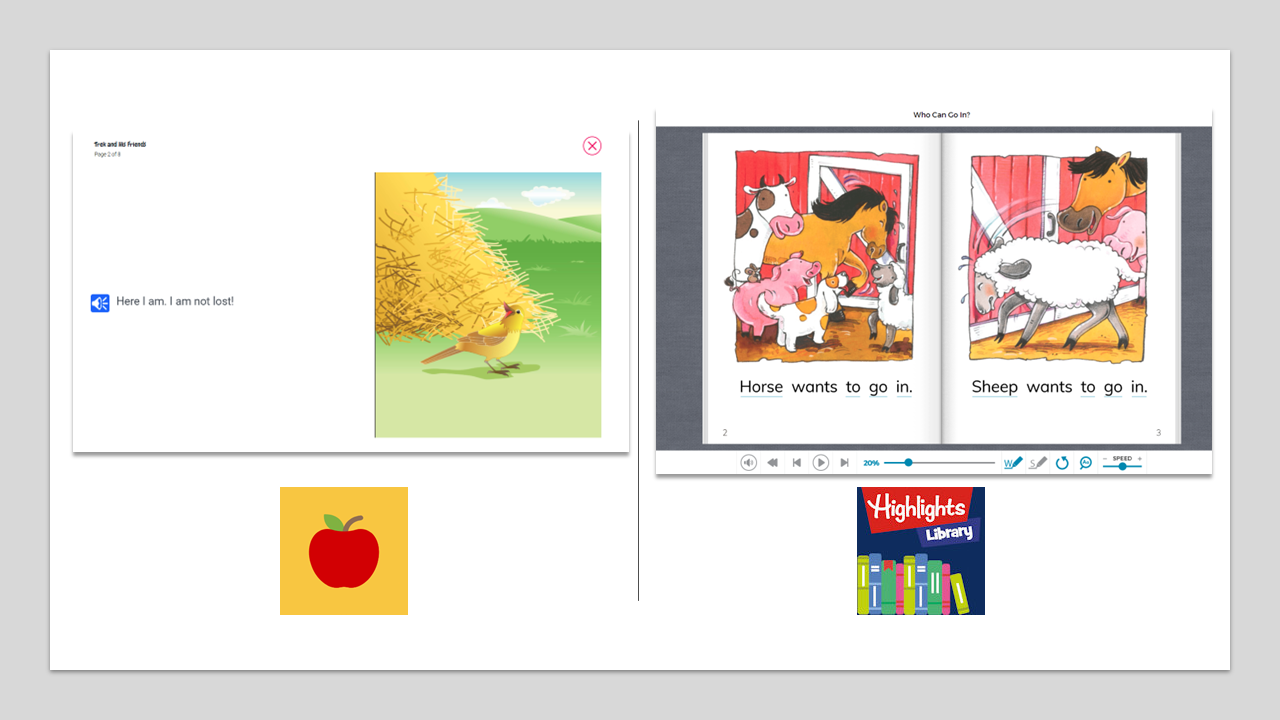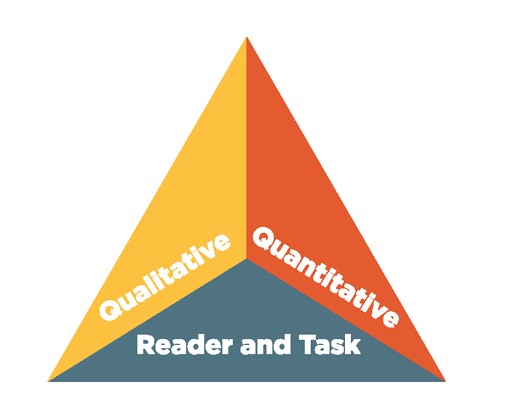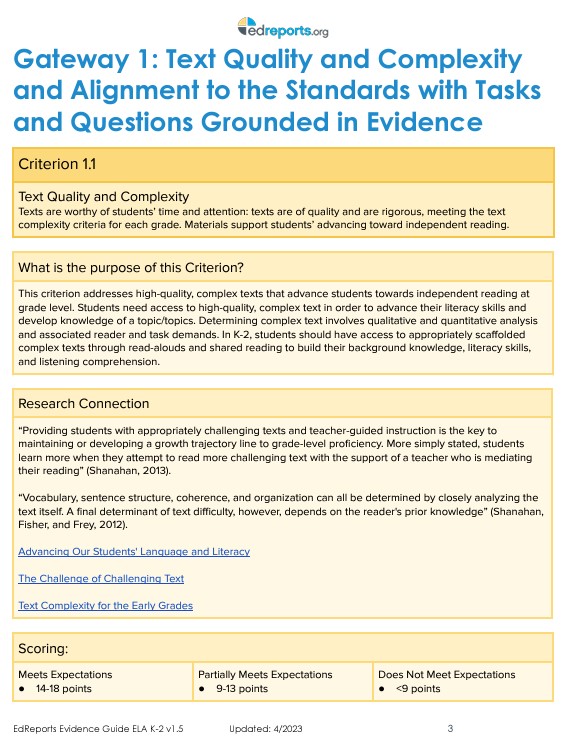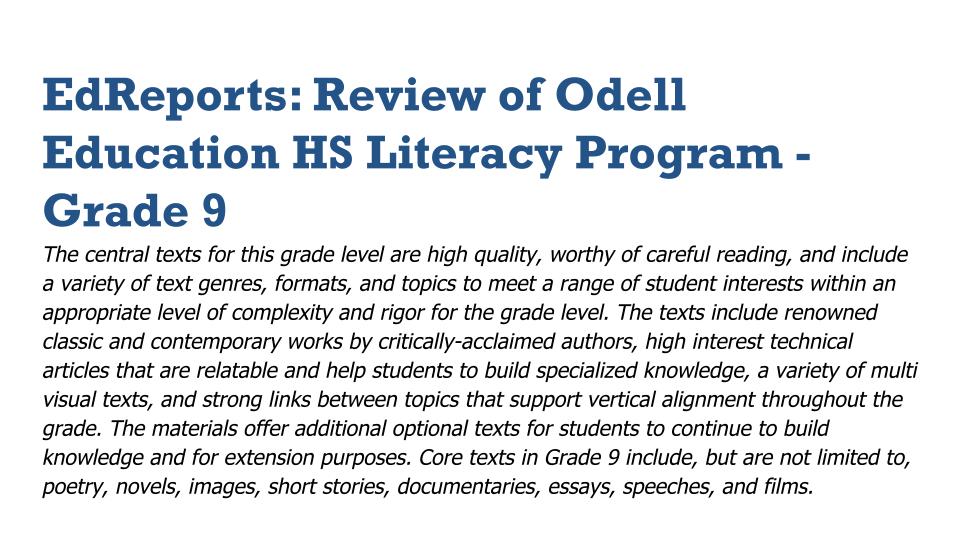In Ending the Reading Wars: Reading Acquisition from Novice to Expert, authors Castle, et al conclude, "Reading comprehension is not a single entity that can be explained by a unified cognitive model. Instead, it is the orchestrated product of a set of linguistic and cognitive processes operating on text and interacting with background knowledge, features of the text, and the purpose and goals of the reading situation."
Text is the structure that bridges readers from decoders to comprehenders, creating travelers from the single word to a connected series of words expressly pulled together to entertain, inform, persuade, and engage. In the 21st Century, text is ubiquitous—printed books, magazines, and journals; eBooks, blogs, and social media; and advertising, road signs, and flashing warnings on the busy highway. It is more than just the written word, however. The spoken word found in video and audio is text, as is artwork using all media types. From these sources come innumerable meanings, messages, and mottos. Reading relies on this text and creates it. In addition, Neumann reminds us that "text is not so much a vessel containing meaning, but also a source of partial information that enables the reader to use already-possessed knowledge to determine an intended meaning."
Decodable Text
When students are learning to read, it is important to present them with quality text to ensure they are able to build the subskills essential for language comprehension. Beginning readers will use decodable text to help them develop grapheme and phoneme awareness and build automaticity—"the ability to recognize words quickly and effortlessly" (Reading Rockets). Cited in the Reading Rockets article, H.A.E. Mesmer asserts that these texts encourage readers to use decoding strategies and sound out words to develop the "reading reflex." The habit of using letter-sound relationships to determine words is preferred over guessing and will lead to independent reading.
You can find decodable text in Highlights Library and World Book Early Learning, both pictured below, and available from INFOhio.

Grade-Level Text
In the systematic, cumulative approach found in Structured Literacy, readers will advance to a wider variety of more difficult text. Concepts previously learned form the foundation for next steps. The best text will help students build background knowledge and vocabulary, understand language structures, develop verbal reasoning, and acquire literacy knowledge.
To support all readers, it is important to provide them with text that meets grade-level standards. Ohio's Learning Standards for English Langauge Arts call for students to "Read, comprehend, and respond to complex literary and informational texts independently and proficiently." To meet this standard, educators should consider the following from Lousiana Believes when choosing complex text:
In addition, Louisiana Believes offers three steps to help find complex text, reflected in the graphic below.
Step One: Find the grade level band of the text based on its readability. Use a quantitative measure to determine the readability and grade-level text complexity range.
Step Two: Find the appropriate grade for the text using qualitative rubrics for informational and literary text.
Step Three: Decide how the text will be used in the classroom by considering the reader and the task.

While there are no set definitions for quality text, there are many sources that outline desired characteristics of text used in teaching and learning. Choosing a high-quality curriculum is the best way to ensure instructional materials are quality, at grade level, provide a variety of text types and genres, and are standards-aligned.
Watch this video to learn more about what to look for in text and why it matters.
Access the transcript for this video here for future reference.
One resource that supports educators in choosing high-quality instructional materials is EdReports, a non-profit agency that provides evaluative reports for curricula. The review tools used to evaluate curricula include specific criteria important for high-quality instructional materials, including quality text. Choosing one of the Evidence Guides for English Language Arts provides helpful tools when considering characteristics of quality text. Criterion 1.1 looks at the text quality and complexity of materials included in the curricula and asks the following questions:
High-Quality and Worthy of Careful Reading
Consider the characteristics of the first bullet. The graphic below is the Evidence Guide for English Language Arts Grades K-2. Note the highlighted words and phrases that support the text evaluation to determine if it is high-quality and worthy of careful reading.

Consider these words and phrases from criteria included in Indicator 1.1 of the EdReports Evidence Guide ELA.
Quality text:
The text below from the Odell Education High School Literacy Program report for grade nine provides an example of how the quality characteristics help reviewers determine the text's quality.

What are the words in the explanation above that most resonate when you think about the characteristics of quality text?
You can learn more about EdReports and its reviews in the EdReports class from INFOhio.
Text Types and Genres
In Why American Students Haven't Gotten Better at Reading in 20 Years by Natalie Wexler, the author reveals that reading success in students doesn't rely on mastering comprehension skills, but rather on how much background knowledge and vocabulary students have on a topic. The Baseball Experiment, led by researchers Donna Recht and Lauren Leslie, proved that "reading ability had little impact on how well kids understood the story." What made a difference in reading ability was the student's knowledge of baseball—the topic of a passage read by 64 students. Knowledge of a topic builds a scaffolding for readers. Providing students with texts of various genres and types is essential for supporting the reader who can tackle text in the real world.
Genre and type aren't the only features important in building reading ability. Debunking a popular approach to teaching reading is key to building better readers. That approach, giving readers texts at individual reading levels, has no scientific evidence to support it. Still, many schools around the country use programs where students are tested to find their "just right" level and then asked to read texts at this level. Timothy Shanahan, emeritus professor at the University of Illinois, says that students need to tackle texts that are too difficult for them in order to learn more. But he warns, "Exposing kids to grade-level text will not automatically raise learning. It just provides an opportunity for greater learning." Shanahan emphasized the importance of instructional techniques and scaffolding to support readers as they engage with more complex texts.
Reflecting on Your Learning
Choose one of the following quotes and respond to it in the High-Quality Instructional Materials for Each Child Open Space group. In the Discussion tab, look for the post New Understanding about Reading Achievement.
Fetch is avaiable to INFOhio automated schools. If you are an INFOhio school, please log in with your school username/password using the button at the top-left corner of this page.
For more information about Fetch, please visit the Fetch information page or contact INFOhio support at https://support.infohio.org.